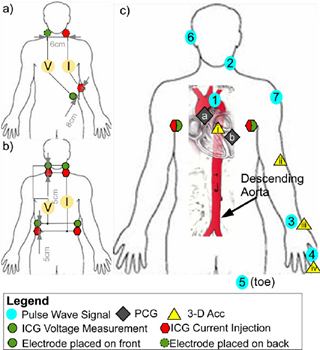Physiological Measurement

Physiological measurement deals with the measurements made to assess how well the body functions. Physiological measurements may be very simple, such as the measurement of body temperature with a clinical thermometer, or they may be more complicated, for example measuring how well the heart is functioning by taking an ECG (electrocardiograph.). When physiological measurement is carried out in a hospital for diagnosis of disease or for controlling treatment it may be called Clinical Measurement instead.
Who needs physiological measurement? Physiological measurements are taken in a wide variety of medical situations with many patients benefiting. These patients include those with heart, bladder, hearing or sight problems or those with breathing and sleep disorders. Patients requiring monitoring during operations, or blood flow or brain activity measurements also benefit from the work of physiological measurement specialists.
Physiological measurements are taken in a wide variety of medical situations with many patients benefiting. These patients include those with heart, bladder, hearing or sight problems or those with breathing and sleep disorders. Patients requiring monitoring during operations, or blood flow or brain activity measurements also benefit from the work of physiological measurement specialists.
New measurements, and applications of measurements, are being found all the time.
How does it work?
The most common types of physiological measurements use a sensor called a transducer that converts a non-electric signal from inside the body into an electrical signal that can be analysed, shown on a screen and recorded.
In cardiology the pressures within the chambers of the heart and the blood vessels may need to be measured. In the operating theatre or intensive care unit this can be done very accurately by putting a catheter with a tiny pressure transducer at its end into the arteries or even inside the heart itself as it beats. The information that this catheter produces may then be combined with a measure of the amount of oxygen in the blood obtained by shining light of different colours through the skin of a finger. The difference in the amount of light absorbed for the different colours gives a measure of the amount of oxygen in the blood within the arteries.
There is also electronic equipment for measuring bladder pressures and flow-rates to help diagnose urinary problems. In addition, the oesophagus may be probed to study how well the muscles work together when swallowing. The acidity in the oesophagus may also be monitored via a radio link to enable surgeons to diagnose problems associated with acid reflux from the stomach.
Physiological measurement is also necessary after surgery, as patients in intensive care units require continuous monitoring of their vital signs, and sometimes have drugs administered under computer control on the basis of those measurements.
Future development
The development and operation of these systems for physiological measurement are the result of collaboration between clinical physicists, engineers, technologists and computer scientists, and their medical colleagues. Developing areas include the use of advanced mathematics to find patterns in measurements taken during the care of premature babies to monitor brain development, early diagnosis of diseases of the eye from photographs of the retina, and measurements of the condition of the heart and main arteries from pulse pressure and flow at the wrist.